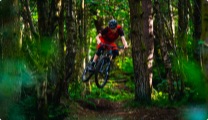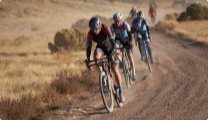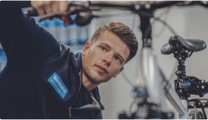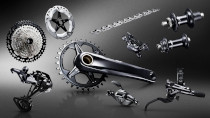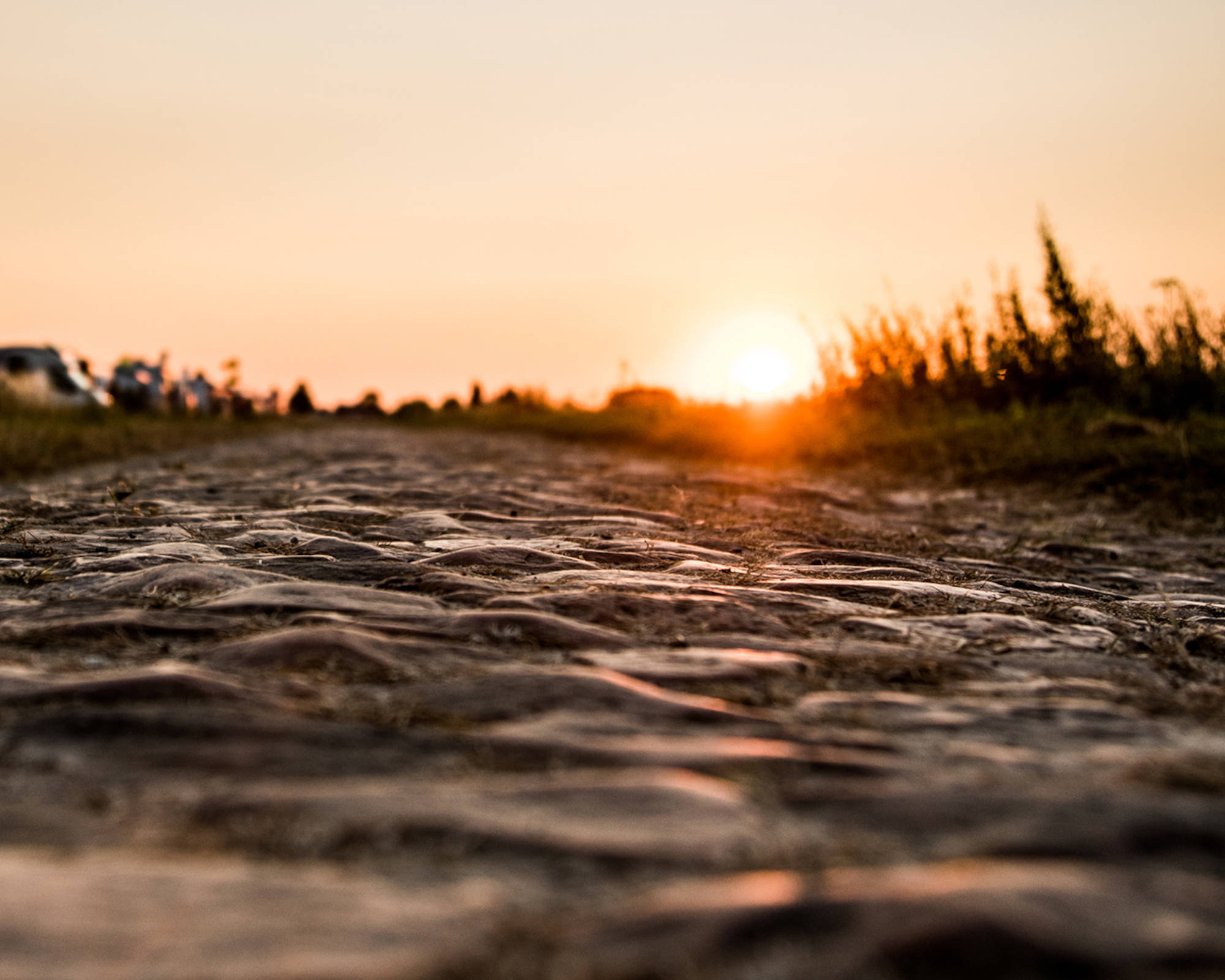Mountains…France is blessed with so many regions of mountains, the Alps, Pyrenees, and Massif Central the most famous, but to the west of Basel lie the Vosges. I’m sure, like myself, until recently you likely wouldn’t have heard of them. Or known where they are if you had. But thanks to the Tour de France hosting several stages in the Vosges recently, this area is becoming a decisive cycling battleground. In the last 10 years, La Planche des belles Filles has hosted 5 stage finishes, even Alpe d’Huez has hadn’t this many, and you could argue that it is far more famous.
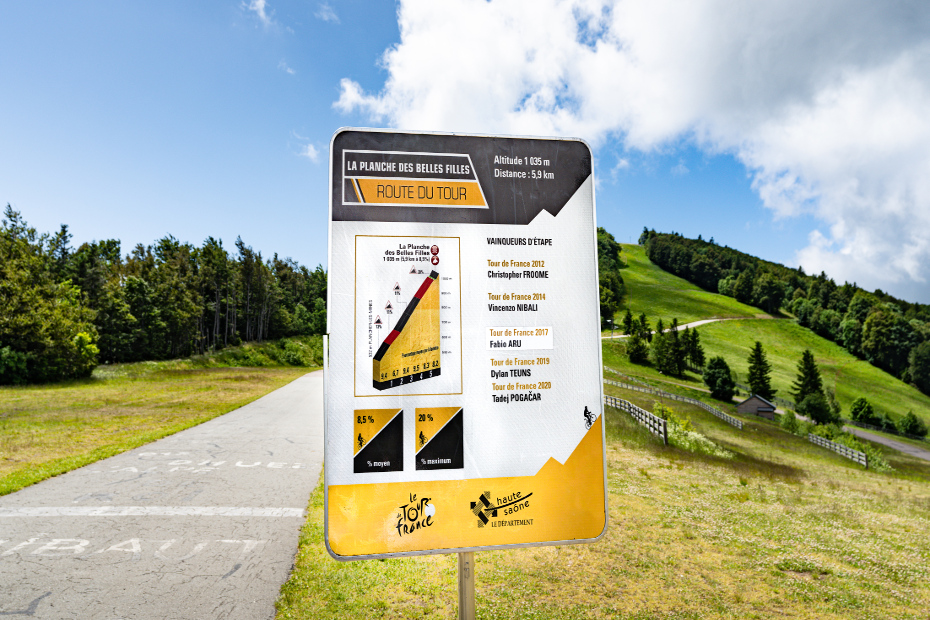
Nestled in the valley, surrounded by trees, is the town of Plancher des Mines where it’s hard to not notice their pride in hosting one of the greatest races on earth. Jerseys, yellow bikes and Tour symbology funnel you to the start of the climb, which is a few kilometres after the town. But this is a “super” climb and a climb with a lactic acid-burning but fun twist!
The climb starts, and although it isn’t long in distance it absolutely should be respected with your effort levels, right from the off. Hopefully you will have read my other articles, about power and how having a power meter is such a useful tool to achieving your fastest time on a climb. On the Super Planche des Belles Filles, you ascend 704 meters in 7.4 kilometres, making for an average gradient of 8.6%. This doesn't sound too bad, but that is an average gradient and there are some leg testing ramps ahead!
Over the years the wording of lieu peuplé de belles fahys (16th-century dialect) which translates to a place with nice beech trees was slowly changed into Belle Filles. As you ride through the lower section, you understand why it was named after the forest. That smell of trees enters your soul, as the recent rainfall evaporates into the air.
Corner 4, nearly 5 kilometres in, ramps up to over 13% before a short plateau. This isn’t a time to not back off, but rather a moment to enjoy some additional speed before all hell breaks loose on the “super” section. The markers on the ground signify the end of the normal road finish and an increase in gradient to above 20%. You’ll see the sign, and it’s time for the twist. The road disappears and now you’re on gravel.
Don’t stop when the paved road finishes. The gravel surface, although loose in places, is rideable on a road bike. If you stop, you’ll be missing the best views. Go for it!
My gravel tips are to keep seated, keep your weight off the handlebars and as far back as possible. The idea is to keep weight on the rear wheel for traction. You’ll be suffering, but try to look ahead at your riding line too. Most of the time the smoothest and easiest sections to ride will be to the sides of the road.
Ooomph! It is steep and I can’t wait to watch the final few hundred meters of this stage. The Super Planche des Belles Filles will serve as the finale for Stage 7 of the Tour in 2022 as well as the pivotal closing kilometres of the inaugural Tour de France Femmes. The last corner in particular is loose and steep. If you don’t pick the right line your wheel will spin out and a high chance you’ll need to unclip. It could cost the world’s best riders the stage or valuable time in the GC battle. Remaining in the seated position, even for them, will be critical.
To the finish, the final hundred or so meters are paved with “Super Planches des Belles Filles” markings painted onto the road. Chances are you won't see those until you get to the top though and are looking back at your fine work.
Gear and Gearing Check
“Where’s the sign?” I asked myself. For the bike shot memoirs! I guess the road markings were it and for this climb, I paid more attention to my setup. Shimano Dura-Ace R9200 series, which is 12-speed (great to have the extra gear for cadence finesse) and semi-wireless. I brought my Wilier Filante SLR which although is an aero road bike, is still light, but very stiff. Perfect for maximising power output. I used 52-36 chainrings at the front and 11-32 at the back. The gradients were steep and having an almost 1:1 ratio was very helpful. Lastly, I brought lightweight Wilier 38mm climbing wheels and used Panaracer Agilest tubeless tyres. Having lower pressures for grip and more puncture protection is important for the gravel stretch to the summit.
What goes up must come down, and the descent is a ripper. Super-fast, non-technical, just be careful on that first corner, and then you can let your bike fly.
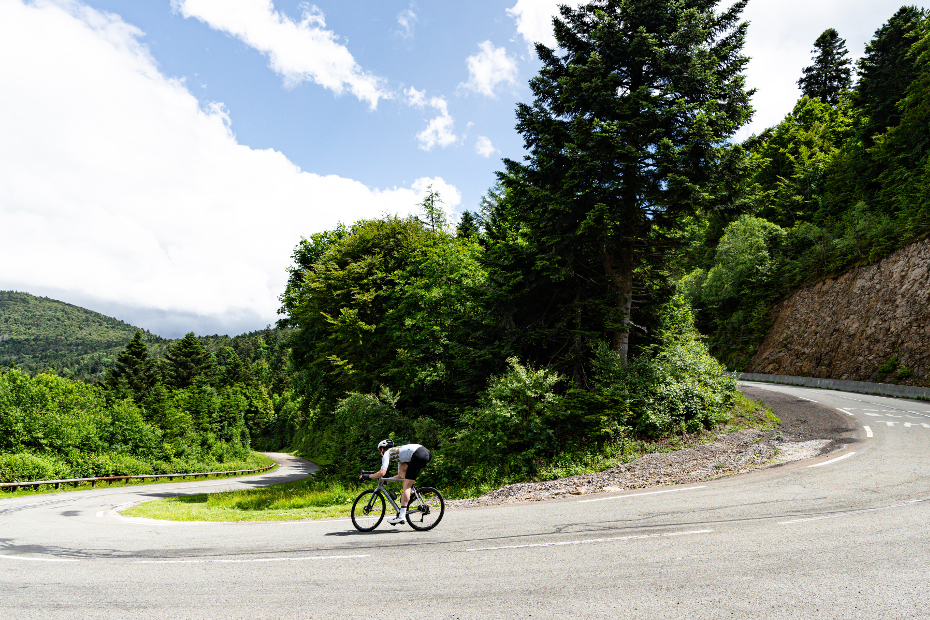
Massif des Vosges and The Tours
Located in Eastern France the Vosges is a 120-kilometre-long mountain range stretching from Burgundian Gate to the Börrstadt Basin in the north east. Along with the Planche des Belles Filles it includes the ascents of the Col du Grand Ballon, to the highest point in the Masssif. Topping out at 1 140 metres above sea level the Super Planche is by no means a high-altitude test, but it has made for exciting racing in the Tour’s five visits. In fact, on four occasions the man in yellow after the Belles Filles finish wore the jersey to Paris. Most notably Tadej Pogačar stormed to stage victory in a time trial up the climb in 2020, breaking the heart of fellow Slovenian Primož Roglič in the process.
The full 7 kilometre, 8.7%, climb will feature in Stage 7 of the 2022 Tour de France, as well as the final stage of the inaugural Tour de France Femmes. The ascent’s history of being decisive is thus likely to continue, as the woman in yellow after the stage will be crowned as the first Tour de France Femmes champion.
